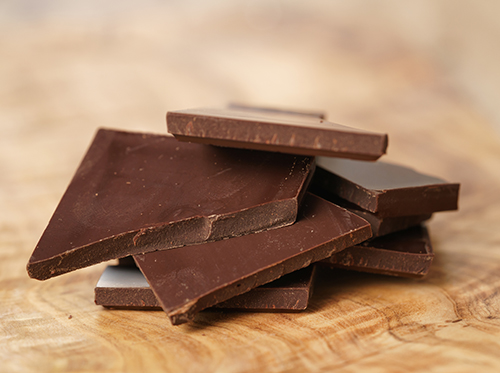
Analyzing strong points, looking for potential problems, making comparisons—it’s bracketology time! Nope, not basketball (although we hear they have something similar), but a brief analysis of your orthodontic options when it comes to choosing a winning bracket.
If you’re getting braces, you’re probably already familiar with how they work—brackets are bonded to the teeth to hold an archwire, which provides gentle, controlled pressure to move the teeth into alignment. But within that basic bracket-and-wire system, there are several different bracket designs available to you at our Aiea, Hawaii orthodontic office. Let’s see what the scouting report has turned up on our final four, pointing out their distinct advantages as well as some potential mismatches.
Traditional metal brackets
Advantages:
Potential Disadvantage:
Clear/Ceramic Brackets
Advantages:
Potential Disadvantages:
Self-Ligating Brackets
Advantages:
Potential Disadvantages:
Lingual Braces
Advantages:
Potential Disadvantages:
So that’s a brief rundown of your bracket choices. But, unlike sports bracketology, there are no losers here! Dr. Curtis N. Kamisugi can give you the pros and cons of each bracket design, so you can make an informed decision based on the kind of braces which will work best for you. With coaching like that, no matter which bracket option you choose, the final result is the same—a winning smile!

Valentine’s Day is the holiday to celebrate all the treasured relationships in your life. It’s a time to honor love in all shapes and forms with cards, social gatherings, and sometimes even binge eating of sweets.
It’s hard to look the other way when grocery stores and pharmacies are invaded with goodies connected to the Valentine’s Day theme, and especially if you’re on the receiving end of some of these sweets. We get it. In fact, we’re all for it!
However, we also support a cavity-free smile. So in the interest of your dental and general health, and because we think it’s genuinely tasty, Dr. Curtis N. Kamisugi recommends an alternative to the Valentine treats you may be accustomed to: dark chocolate.
Yes, Healthy Chocolate Exists
Studies have shown that dark chocolate is high in flavonoids, an ingredient found in the cocoa beans used to make chocolate. Flavonoids can help protect the body against toxins, reduce blood pressure, and improve blood flow to the heart and brain.
By opting for dark chocolate rather than milk chocolate, you get to reap these benefits! Pretty sweet, right? Just make sure to stick to high-quality dark chocolates that have undergone minimal processing.
Dark Chocolate, AKA Protector of Teeth
Not only does dark chocolate provide some nice benefits for your overall health, it also helps protect your teeth against cavities! According to the Texas A&M Health Science Center, dark chocolate contains high amounts of tannins, another ingredient present in cocoa beans.
Tannins can actually help prevent cavities by interfering with the bacteria that causes them. Think of them as scarecrows for bacteria. They don’t always prevail, but isn’t it nice to have them there?
Smooth Never Sticky
Unlike many popular candies, dark chocolate is less likely to stick in the crevices of your teeth. Chewy, gooey sweets are more likely to hang around in your mouth for longer periods of time, which means they raise the odds of your harboring cavity-creating bacteria.
While some dark chocolates have additives like caramel or marshmallow, it’s best to opt for the plain varieties, which are just as delicious. If you’re feeling festive, though, a dark chocolate with caramel is still better than a milk chocolate with caramel, so that’s the way to go!
While dark chocolate has some pretty sweet benefits, the most important thing to remember (whether you go the dark chocolate route or not), is that moderation is key. That being said, we hope you have fun satisfying your sweet tooth and shopping for treats for your friends and loved ones. Happy Valentine’s Day from all of us at Kamisugi Orthodontics!

You might be surprised to learn that Dr. Curtis N. Kamisugi and our team recommend an orthodontic appointment even before your child has had that last visit from the Tooth Fairy. In fact, orthodontic assessments at our Aiea, Hawaii office can be beneficial at many stages of your child’s life. Let’s look at some of the reasons why.
The Right Spaces
There’s a reason why we recommend that every child see an orthodontist by the age of seven. If there’s room enough in your child’s mouth to accommodate all the permanent teeth that will be arriving soon, you’re good to go. But if it looks like there won’t be enough space for those adult teeth, there are solutions we can offer to make the transition from baby teeth to adult teeth a smoother one.
If no treatment is necessary immediately, we can monitor the development of your child’s teeth and bite during periodic visits.
(Stay in) The Right Places
Once your child has achieved that perfect smile, it’s time to maintain it. Teeth actually move and shift throughout our lives, whether we have had orthodontic treatment or not. But with orthodontic treatment, the bone tissue and ligaments around the teeth remodel over time to hold the teeth in their new and improved positions. That’s why it’s often important to wear a retainer constantly for several months after the braces come off, as bone and ligament become a firm, strong anchor for the newly aligned teeth and bite.
But there’s no one expiration date on retainers! Worn nightly as needed, they help teeth stay securely in their new positions for a lifetime of beautiful smiles.
Healthy Smiles Mean Happy Faces
If you think your child is ready for any phase of orthodontic work, give us a call. We will be happy to make sure there is ample room for permanent teeth to erupt in their proper spots even during the baby teeth years. If braces are indicated at a later date, we will analyze any potential alignment and bite problems and present all of your treatment options. Finally, after the orthodontic work is completed, we want to make sure your child knows the best way to maintain that beautiful smile with conscientious retainer wear.
If you have any concerns about your child’s teeth or bite, even before the permanent teeth arrive, give our Aiea, Hawaii office a call. Early treatment can often prevent future problems and might even lead to faster orthodontic results. At each stage of your child’s growth, we are here to provide your best options for healthy, happy smiles.

As you near the end of your orthodontic treatment, you’re probably already imagining the day when your brackets and wires finally come off. Or the moment you’ve finished with your last set of aligners. That day might come just a bit sooner if Dr. Curtis N. Kamisugi and our team recommend a positioner.
While not as well-known as other orthodontic treatments, a positioner is an appliance that can shorten your time in traditional braces and aligners by weeks or even months. Curious? Read on!
A positioner resembles a clear mouthguard. Its arched shape is designed to fit snugly over your teeth. It’s sometimes called a finishing appliance, because it’s designed to make those last small adjustments to your alignment and bite. If you’re a good candidate for a positioner, it can replace your braces or aligners for your last several weeks or months of treatment.
This appliance is custom fabricated to fit your very specific orthodontic needs. Commonly, a mold is made of your teeth. A model of your teeth is made from this mold. Precision instruments are used to move the model teeth into your ideal alignment.
Once this model of your future finished smile is complete, it is used to create the positioner. When the thermoplastic material is molded to the model, it creates an appliance with an indentation for each individual tooth in its desired final location.
Available in a variety of materials, a positioner is most often designed as a clear single piece, covering both your upper and lower teeth. This makes sure that your teeth are not only aligned properly, but that your upper and lower teeth are working together for a healthy bite. Openings in the positioner provide airways which allow you to breathe easily.
Because your teeth haven’t settled firmly into place yet (this will happen as you wear your retainer), they’re still able to move. That’s why your positioner is shaped to fit your teeth in their future ideal placement, not where they are at present.
Positioners require your active participation. Your teeth move to the ideal spots molded into the positioner through “exercise”—biting down on your appliance for 15-20 seconds before relaxing your bite, usually every 10-15 minutes during your daily wear. The gentle force provided by your jaw muscles helps guide your teeth into position more quickly. Dr. Curtis N. Kamisugi will give you instructions on just how to—and how often to—do these exercises.
Positioners are commonly worn at least four hours a day to start with and all night long, or Dr. Curtis N. Kamisugi might recommend 24 hour a day wear for the first week. As you progress, you’ll wear them for shorter periods during the day, gradually tapering off until your treatment is complete.
Depending on the amount of correction that’s still needed, positioner use ranges from several weeks to several months. One thing that will ensure that your time in a positioner is as short as it can be is your willingness to follow our instructions. The speed and effectiveness of your final tooth movements is largely up to you!
Gentle treatment is best. Clean your positioner before and after wearing it using a toothbrush and mild toothpaste. Never boil it or expose it to heat. We will give you instructions for how to clean it more thoroughly, if needed.
Like retainers, clear aligners, and mouthguards, a positioner needs to be protected when it’s not in your mouth. Your positioner will come with a case, so be sure to use it!
Positioners aren’t recommended for every orthodontic patient. But if you feel this might be an option worth pursuing, talk to us when you visit our Aiea, Hawaii office. A positioner could be an effective, time-saving step on your path to a lifetime of healthy smiles.